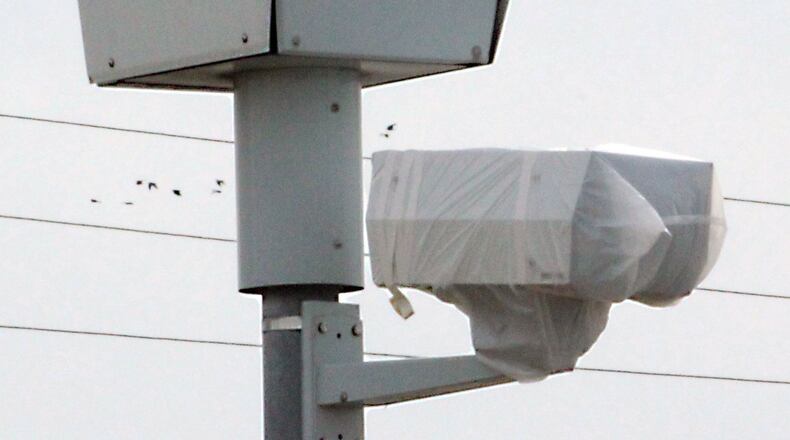RELATED: Ohio Supreme Court to hear Springfield red light camera lawsuit
Dayton first installed red light cameras in June 2002 and Springfield installed its red light cameras in 2005. Tickets were treated as civil infractions, rather than criminal violations, and resulted in fines but no points on a driver’s license. A police officer would review videos and photos before a citation would be issued.
Other Ohio cities, large and small, made use of the cameras to enforce traffic laws.
In December 2014, state lawmakers passed a bill that severely curtailed use of the cameras by requiring that a full-time police officer be present when the cameras are on, mandating that a traffic study be conducted and a public awareness campaign held before cameras are installed and limiting citations to speeders going 10 miles per hour over the limit in most areas and 6 mph in school zones.
The Ohio Supreme Court in 2008 upheld the right of cities to use traffic cameras and in December 2014 the court upheld the authority of cities to use administrative appeals processes to enforce traffic laws using cameras.
READ MORE: Springfield sues to save red light cameras
The city of Dayton argues in its lawsuit that the General Assembly specifically wrote the law to block local jurisdictions from using the cameras, which is a limit on municipal home-rule powers granted by the state constitution. The city’s case has the support of the Ohio Municipal League, which represents 700 cities and villages. The city of Springfield also filed a brief supporting the city of Dayton’s lawsuit.
The state, meanwhile, argues that municipalities can still use the cameras to issue traffic citations, as long as the local ordinances don’t conflict with state law. The state says the law provides a statewide framework for overseeing traffic cameras.
Oral arguments in the Dayton case before the seven-member Ohio Supreme Court are scheduled for Jan. 10.
The supreme court will consider Springfield’s case after it decides Dayton’s case, Springfield Law Director Jerry Strozdas said. The justices will look at two points:
• Whether a municipal ordinance that establishes an automated system for civil enforcement of statewide traffic laws is a valid exercise of self-government under the Ohio Constitution.
• Whether cities must comply with a state statute that has the principal purpose and effect of limiting municipal authority.
“What’s really at issue here is the extent to which cities can make local decisions,” Strozdas said. “That’s what the home rule provisions of the state constitution are about — the people of the state of Ohio through the Constitution gave powers directly to the cities. And with this traffic camera law, the state is trying to deprive cities of the rights the people gave to cities.”
The red light cameras in Springfield were shut off after the new regulations went into effect. The city had issued about 77,000 citations between 2006 and 2015, collecting about $3.4 million in fines.
Under the new law, the city estimated it would have to hire at least 42 officers to run its 17 cameras at 10 intersections.
About the Author

